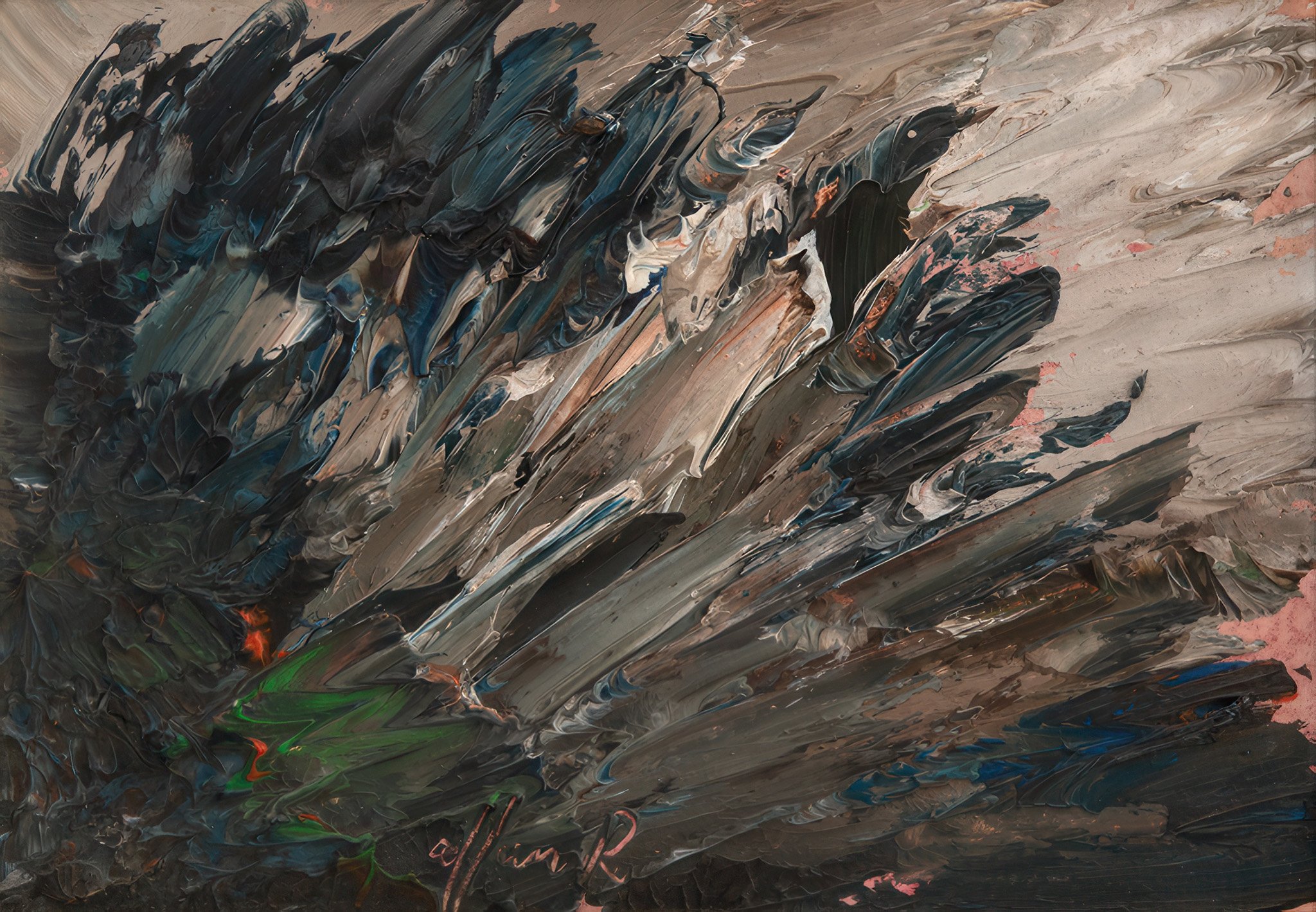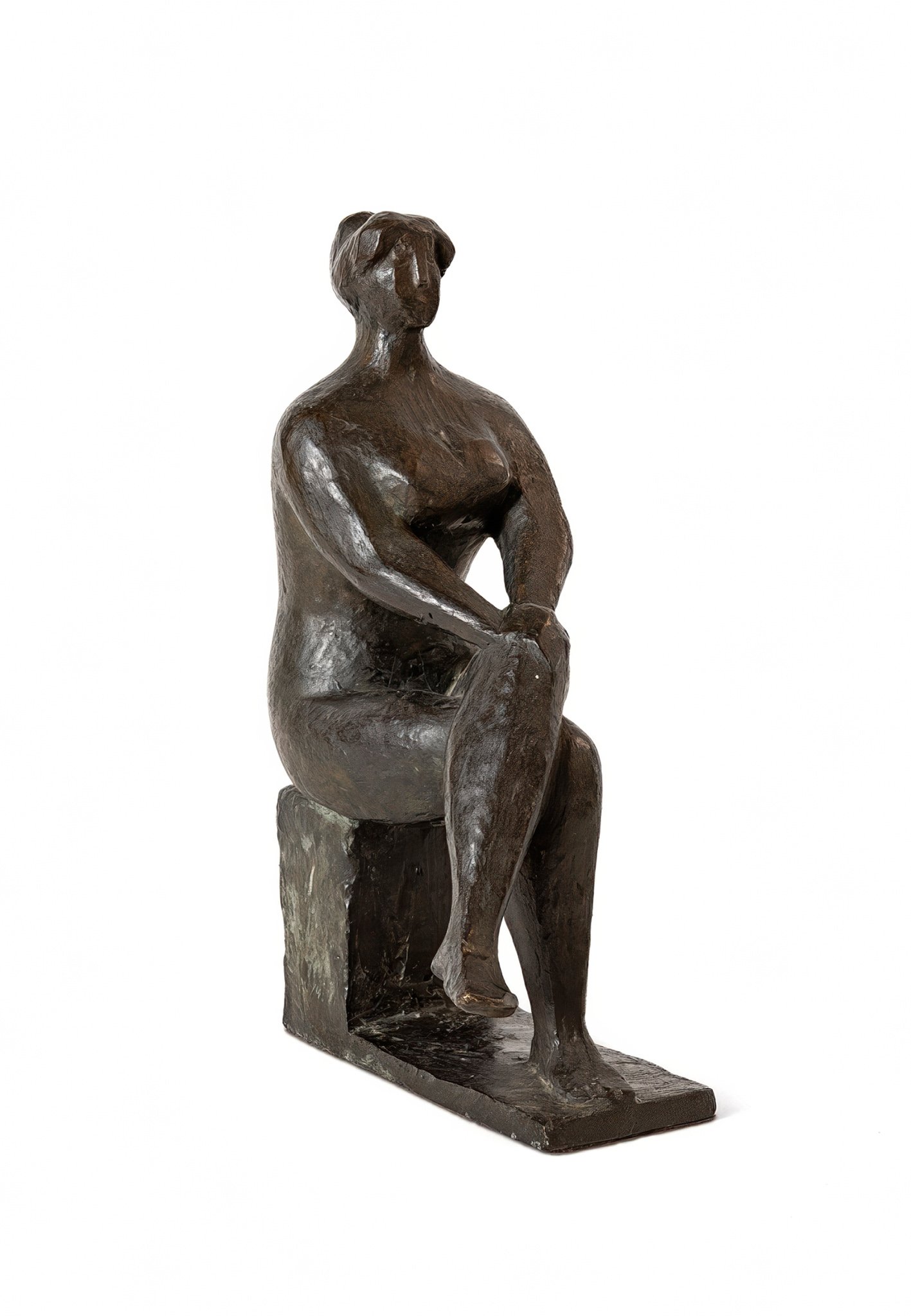
IN FOCUS COLLECTIONS

A selection from the collection of artworks titled In Focus Collections is an exhibition displayed across four floors of the gallery at the Bosniak Institute. Through five thematic sections (Old Masters / Figures / Neighborhoods, Markets, Landscapes / Bosnian Graphics / Abstract and Associative), it offers an overview of the richness of the Institute's art collection, featuring works by some of the key figures of the art scene in Bosnia and Herzegovina and the region during the 20th and early 21st centuries. The gallery presentation of the collection is complemented by the legacy collections of Mersad Berber, Ismet Rizvić, Edin Numankadić, and Fuad Arifhodžić, as well as the Portrait Gallery - depicting prominent figures from the history of Bosnia and Herzegovina - and a sculpture display by notable local and regional artists.
OLD MASTERS
The works of the first generations of academically trained Bosnian-Herzegovinian artists offer a unique cross-section of the richness and diversity of artistic expressions by some of the pioneers and prominent representatives of modern art in Bosnia and Herzegovina. A connection to tradition is evident in the depictions of old Sarajevo and its inhabitants by Petar Šain (1885–1965) and Đoko Mazalić (1888–1975). Landscapes dominate the canvases of Hakija Kulenović (1905–1987) and Rizah Štetić (1908–1974), with the latter achieving recognizable chromatic harmony even in still life. Ismet Mujezinović (1907–1984), a giant of Bosnian-Herzegovinian painting, demonstrates the breadth of his skill across various techniques and themes, with his most striking works being those inspired by wartime. Alongside Mujezinović, the art of World War II in Bosnia and Herzegovina is marked by Vojo Dimitrijević (1910–1980), who achieves dramatic compositions through bold color planes and sharp contrasts rather than detailed figural representation. The still lifes of Roman Petrović (1896–1947) and Behaudin Selmanović (1915–1972) are characterized by a reduction of objectivity and reliance on basic visual elements, blending influences from East and West. The surrealistic and metaphysical atmosphere in Ibrahim Ljubović’s (1938–1995) paintings introduces new values into the thematic and conceptual frameworks of 20th-century Bosnian-Herzegovinian art.
FIGURES
A selection of works from the Bosniak Institute’s art collection featuring figural motifs reflects stylistic pluralism: from realistic portraits created using various artistic techniques, to the vibrant interplay of colors in the works of Ismar Mujezinović (1942), and the expressive dynamism of forms by Izet Alečković (1944). The collection also includes poetic, abstract compositions by Salim Obralić (1945–2018). A special highlight is the piece Hamal with a Sacrificial Lamb by Czech artist Franz Leo Ruben (1842–1920), who captured scenes of everyday life during his stay in Bosnia and Herzegovina under Austro-Hungarian rule.
NEIGHBORHOODS, BAZAARS, LANDSCAPES
The old architectural structures, intertwined with the natural surroundings of Bosnian-Herzegovinian landscapes, have inspired many local artists to highlight the importance of preserving cultural and historical heritage. Depictions include the Old Bridge in Mostar, the Ferhat Pasha Mosque in Banja Luka, the vistas of Počitelj and Sarajevo, Gazi Husrev-beg Mosque, bazaars, neighborhoods, alleys, cobblestone streets, and gates. These motifs, realized in various painting, graphic, and drawing techniques, underscore the country’s rich architectural heritage. The lyrical atmosphere of Safet Zec's (1943) paintings nostalgically evokes past times, with lush green foliage protectively enveloping the intimacy of Bosnian houses.
GRAPHIC ART
In the latter half of the 20th century, Bosnian-Herzegovinian art entered international art circles, primarily through the works of graphic artists trained in academies in Ljubljana, Belgrade, and Zagreb. The selection of graphic works from the Bosniak Institute's collection, including pieces by representatives of the golden age of Bosnian graphic art, offers valuable insight into the achievements of local artists from the 1960s to the 1990s. Dževad Hozo (1938–2020), with his mastery of complex intaglio methods, developed a concise, content-rich, and formally refined expression of high artistic awareness. Mersad Berber's (1940–2012) works are marked by allegorical motifs and a lush style, harmonizing traditional and contemporary artistic tendencies. The tonal gradation in Emir Dragulj's (1939–2002) aquatint and mezzotint prints evokes a wistful metaphysical ambiance, while Halil Tikveša's (1935) dreamlike depictions of Herzegovinian scenes, purified to the essence of form, exude meditative qualities.
ABSTRACT AND ASSOCIATIVE
The selection of works created in the late 20th and early 21st centuries by Bosnian-Herzegovinian artists moves away from the representation of objective reality, allowing the authors' sensibilities to emerge through pure expressions of color, lines, and shapes. Mehmed Zaimović's (1938–2011) canvases communicate an authentic visual language achieved through a fusion of arabesque-ornamental traditions, organic-microscopic forms, and geometric fields in earthy tones. Edin Numankadić (1948) uses his brush to create elusive yet recognizable sequences that represent fragments of an ongoing, unstoppable creative process. The dynamic instability and dramatic transformation of matter on small formats in Affan Ramić's (1932–2015) works exemplify the suitability of abstract art for expressing the deepest inner struggles of the human spirit.
Affan Ramić, Landscape, 1995.
Ahmed Džuvić, Landscape, 1995.
Alija Kučukalić, Couple #1, 1974.
Edin Numankadić, A box, 1997.
Edin Numankadić, Notes, 2004.
Emir Dragulj, Crvena avlija, 1974.
Enver Krupić, Jajce waterfall, 1969.
Fuad Arifhodžić, Domes
Halil Tikveša, Summer, 1967.
Ismar Mujezinović, Tango, 1989.
Ismet Mujezinović, Kozara Circle Dance, 1972.
Ismet Rizvić, Emerging II, 1988.
Mehmed Zaimović, Butterfly, 1978.
Mensud Kečo, Combustions, 2018.
Mersad Berber, A Great Allegory of Srebrenica, 2005.
Mersad Berber, Exodus, 1999.
Mevludin Ekmečić, Portrait of Adil Zulfikarpašić's mother, 1989.
Mevludin Ekmečić, Winter, 1992.
Mujo Alagić, Rondo-Circle-Tondo, 2004.
Nedžad Ibrišimović, Semazen the Dervish, 2004.
Rizah Štetić, Old bridge in Mostar, 1949.
Safet Zec, Closed gate in Foča, 1988.
Salim Obralić, Landscape near Počitelj, 1984.
Salim Obralić, A woman under the shawl, 1988.
Salko Šarić i Vladimir Kolopić, Humiliation of beauty
Sead Čerkez, Tulips in the park, 2021.
Seid Hasanefendić Trabzon, Day after, 2004.
Seid Hasanefendić Trabzon, Tombstones, 1988.
CONTACT
Bosniak Institute - Adil Zulfikarpašić foundation
Mula Mustafe Bašeskije 21
71000 Sarajevo, Bosnia and Herzegovina
+387 33 279 800, +387 33 279 777
info@bosnjackiinstitut.ba
biblioteka@bosnjackiinstitut.ba
BUSINESS HOURS
Monday - Friday
8:00AM - 4:00PM
LIBRARY HOURS
Monday - Friday
9:00AM - 4:00PM
VISITS
Monday - Friday
9:00AM - 4:00PM
GUIDED GROUP VISITS
Announced by phone or e-mail
© 2024 Bosniak Institute, all rights reserved.




























